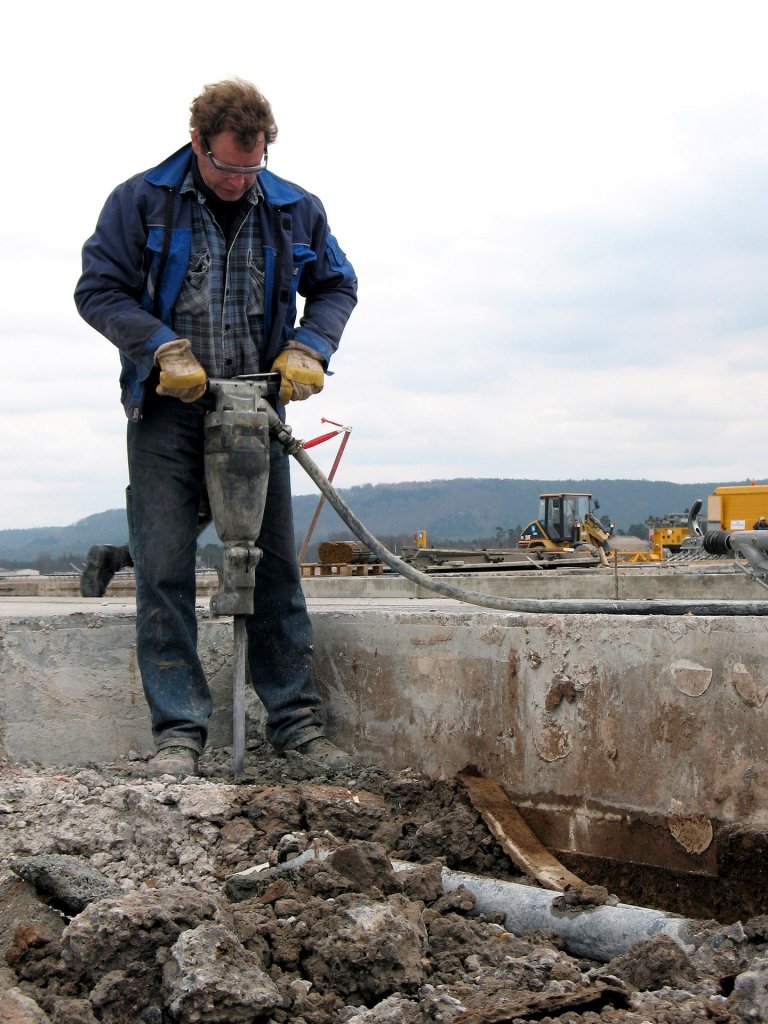Hearing Protector Fit Testing
In physics, sound is a vibration that typically propagates as an audible wave of pressure, through a transmission medium such as a gas, liquid or solid. And in human physiology and psychology, sound is the reception of such waves and their perception by the brain. Humans can only hear sound waves as distinct pitches when the frequency lies between about 20 Hz and 20,000 Hz. Sound above 20,000 Hz is ultrasound and is not perceptible by humans. Sound waves below 20 Hz are known as infrasound.
Noise, on the other hand is sound judged to be unpleasant, loud or disruptive to hearing. From a physics standpoint, noise is indistinguishable from sound, as both are vibrations through a medium, such as gas, liquid or solid. The difference arises when the brain receives and perceives a sound.
If we are in the business of prevention of hearing loss, we recommend the use of hearing protectors, as per Figure 1. Actually he forgot them at home and his daughter is using them (Figure 2).

Figure 1. Oh, he forgot his hearing protectors…

Figure 2. Hearing protectors for miners (minors).
Hearing Protection Attenuation
“Hearing protection attenuation” is the property to reduce the sound level reaching the tympanic membrane. It is measured in dB at the different octave (and some inter-octave) frequencies between 125 Hz and 8,000 Hz. Because it becomes too complicate to deal with the attenuation at all audible frequencies, the term NRR (Noise Reduction Rating) was introduced. It is a single number rating that ranges up to 35 dB. The higher the rating larger is the protection offered by the given protector.
The attenuation depends on many factors. To start with, it depends on the physical property of the device, such as the material it is made of, its density and shape. Attenuation has to reduce the sound energy entering the ear. Because this energy travels through the air, the intention is to hermetically close the external ear canal; something that is practically impossible. A better focus is the seal between the protector and the ear canal (in the case of earplugs) and leads to better attenuation. The same applies to the muffs, where the seal between the cups and the skull of the wearer is essential. However, the use of protective eyewear can negatively influence this seal.
The quality of the seal is essentially dependent on the skill of the wearer to properly fit the hearing protectors. This may appear as trivial when dealing with muffs: just slide them over the head and make sure each cup lays smoothly enclosing the pinna of each ears. The operation of fitting becomes trickier when dealing with earplugs. The classical way of performing it involves pulling each pinna with the opposite hand. The pull, intended to straighten the ear canal, has to be directed to the back and away of the head (see NIOSH, National Institute for Occupational Safety and Health, Mining Program, 10/5/2016). Many open their mouth during the insertion process since the anterior part of the ear canal slides forward as the mouth opens, thereby allowing the earplug to be inserted deeper in the ear canal.
Laboratory testing of hearing protectors is documented through national and international standards. Results are presented as the attenuations at the different audiometric frequencies from 125 Hz through 8000 Hz. From these data, several single, or double, number rating can be calculated (NRR, HML, etc.) to facilitate the calculation of the sound level at the ear when the hearing protectors are worn (known as the sound level of the protected ear).
The main problem of using those data, arises from the fact that they are the average attenuations obtained from laboratory tests. As such, they do not predict the result of wearing the hearing protector by an individual in a real-life situation.
So, is there a way of performing such a measurement? There are many devices in the marketplace that do precisely that: they measure the attenuation experienced by an individual. Of course, the result is valid only for that individual and for that particular instance. There is no assurance the same result will be obtained by the same individual in any other instance, since the attenuation depends strongly of the fitting that may differ from one occasion to the other, or even the duration that the hearing protector is worn.
Fit Testing
Individualized fit testing has several potential benefits such as:
- Verifying if the individual is properly protected from the noise they are exposed to.
- Training in proper hearing protectors fitting.
- Training the trainers.
- Helping choose proper hearing protector for a given noisy environment.
The testing itself takes less than 10 minutes to be completed, using a device called Field Attenuation Evaluation System (FAES). The person is asked to undergo an audiometry-like test without the hearing protector in place. Then the hearing protector is donned and the procedure is repeated. The result appears as dB PAR, which is a one number rating. Subtracted from the ambient noise level, dB PAR represents the noise level of the protected ear.
PAR varies between 0 and 30. Most workers experience dB PAR>25, that allow them to work in environments where the average daily noise level is up to 110 dBA. Most noises found in industry do not exceed this level.
Conclusion
Fit testing helps workers understand the importance of proper usage of their hearing protectors. In a typical study, as a first step the worker dons his protectors. Then, the proper way is shown, and the procedure is repeated. With proper instruction the resulting dB PAR is usually 5 dB higher and the worker sees and understands the importance of a proper hearing protection usage.
In summary, when individuals are involved in the fitting process and receive positive feedback on the proper fit of their hearing protection, they acquire a positive attitude about protecting their hearing and use hearing protection correctly and consistently in the workplace.

